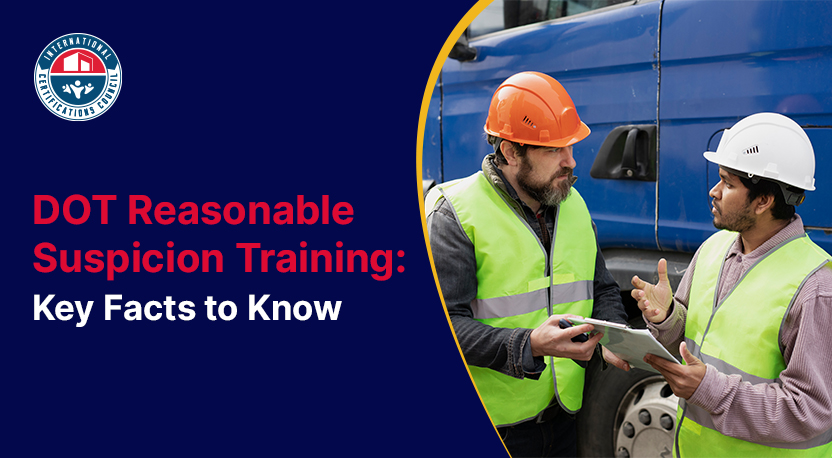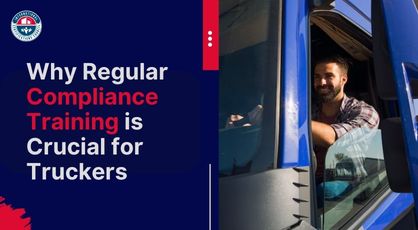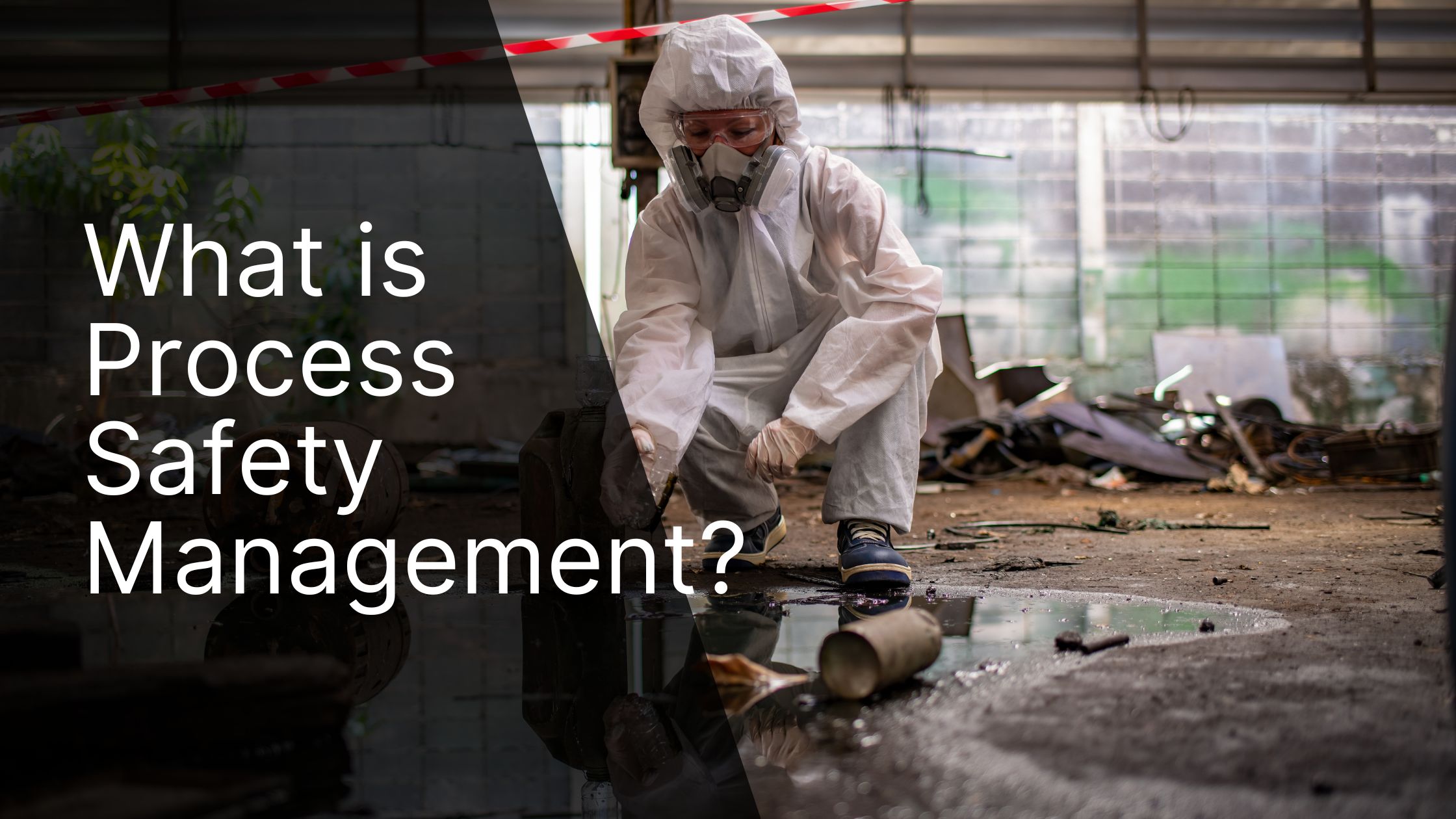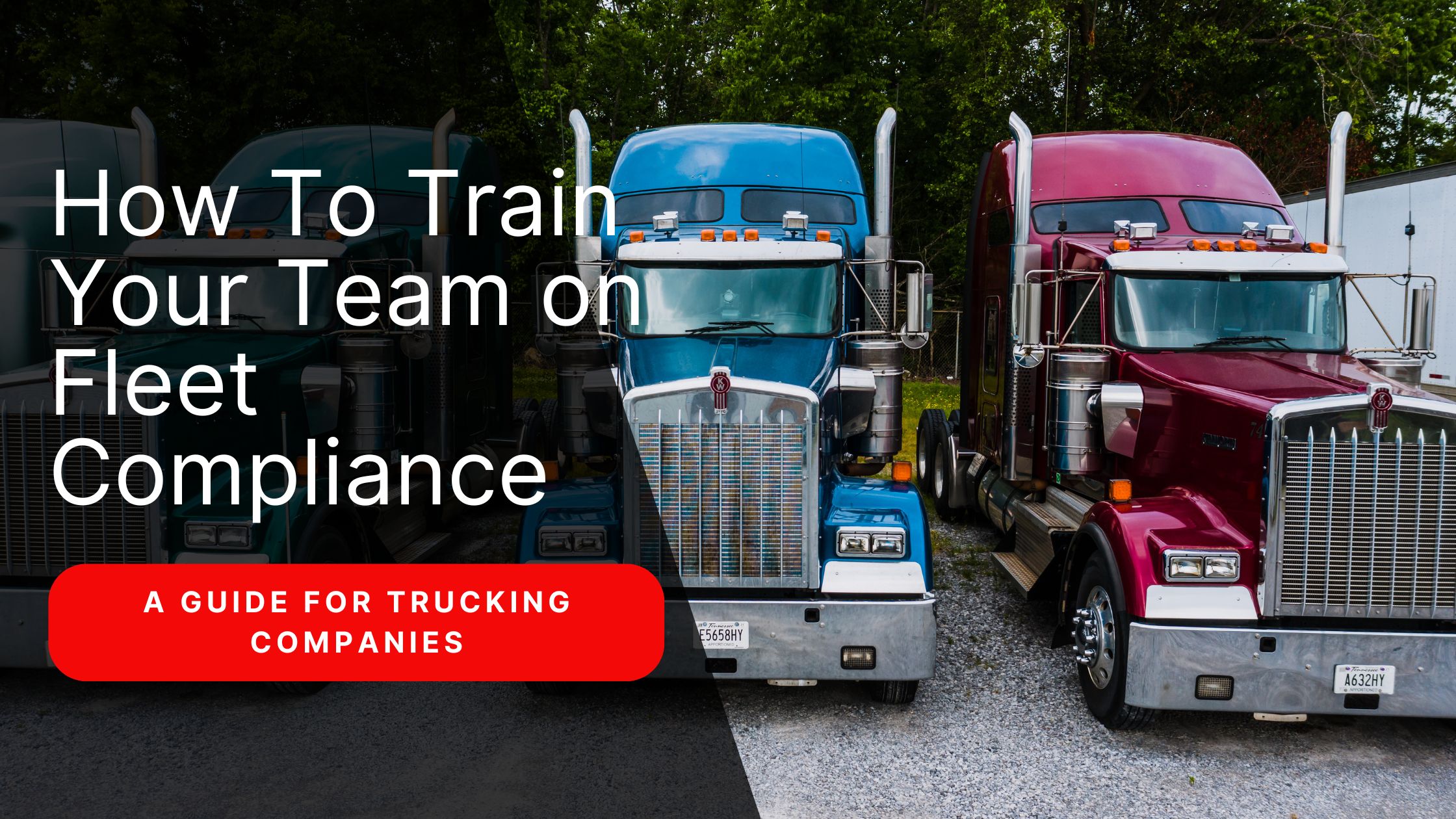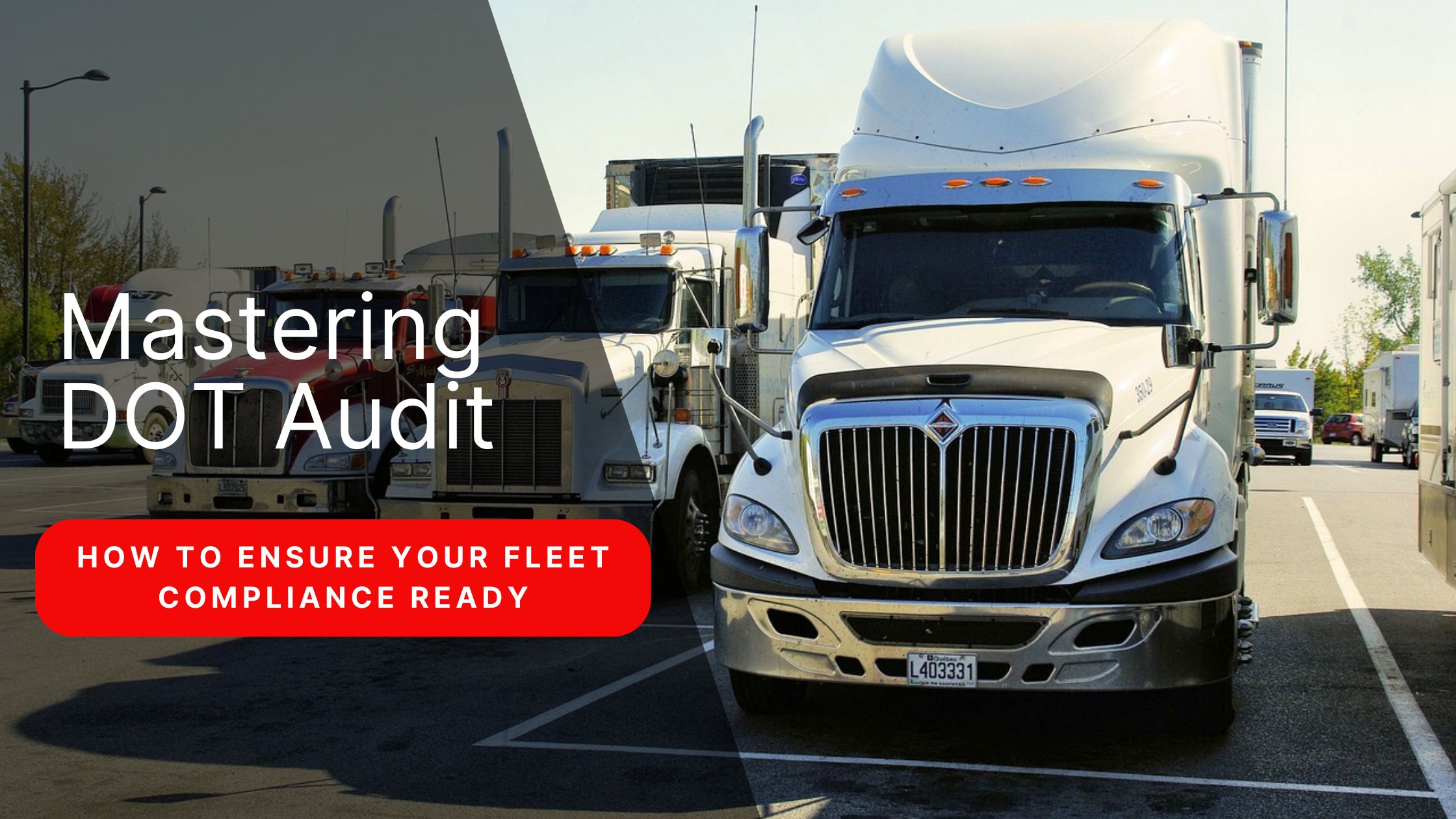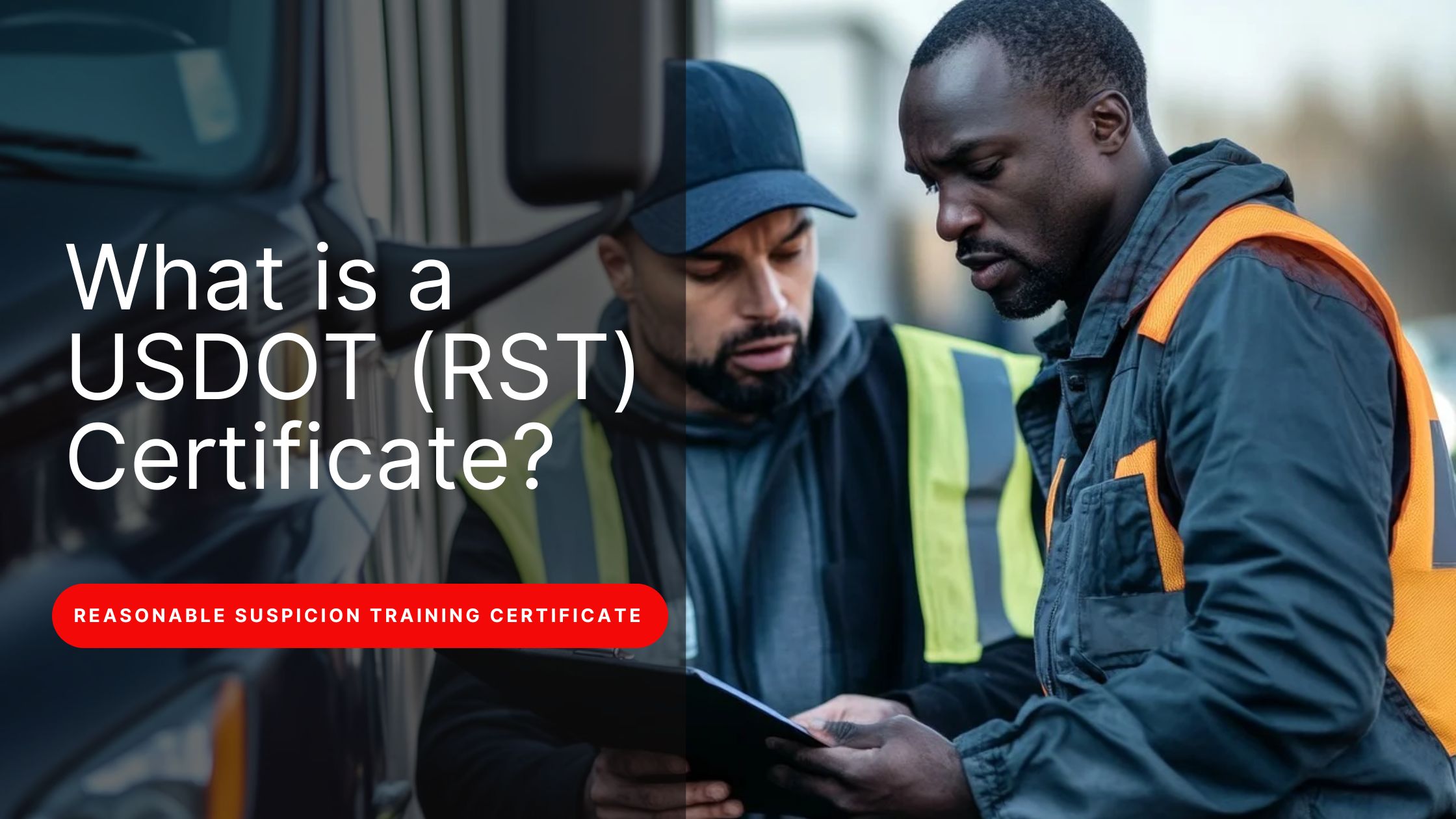Any business engaged in commercial motor vehicle (CMV) operations has to first guarantee adherence to Department of Transportation (DOT) rules. Whether you run a trucking company or monitor a fleet of drivers, knowing and following these training guidelines will help you avoid expensive fines and, more importantly, help to keep the roads safer for all.
This guide will break out the key DOT training areas you should know.
We will address everything from basic instruction to specialist training including alcohol and drug awareness and hazardous material handling. You will also learn why accurate documentation is important and how technology might streamline compliance.
Why DOT Compliance Training Is Important
DOT compliance is about safety and efficiency rather than only following legal requirements.
Following these rules guarantees that drivers are entirely ready for their obligations on the road and lowers their chance of mishaps. Correct training improves driver performance, less liability, and a more substantial company reputation.
Core Components of DOT Compliance
DOT compliance covers a wide range of areas, including:
- Driver Qualifications: Qualifying drivers satisfy particular licensing and health requirements, known as qualification.
- Hours of Service (HOS): Monitoring and regulating the hours drivers operate helps to prevent tiredness or hours of service.
- Vehicle Maintenance: Regular inspections support the safe and operational state of vehicles.
- Drug and Alcohol Testing: Strictly forbid drug abuse under no-tolerance.
Key Training Requirements for DOT Compliance
Understanding and providing the proper training is fundamental to maintaining compliance. Here are some crucial training areas:
1. Driver Training
Drivers are the backbone of any transportation operation. Their training is extensive and covers both regulations and safety measures. Here’s what drivers should know:
- Hours of Service (HOS) Rules: Drivers must learn to control their driving hours and required breaks according to rules on hours of service (HOS). The HOS regulations are meant to lower mishaps brought on by driver tiredness.
- Vehicle Inspections: By teaching drivers to conduct exhaustive pre-and post-trip inspections, vehicles are kept safe for operation. Drivers must be alert to possible problems and report them immediately.
- Defensive Driving Techniques: This training emphasizes foreseeing road hazards and acting early to prevent collisions.
- Hazardous Material Handling: Special hazardous material training is needed for drivers transporting dangerous goods to grasp the hazards and apply safety procedures.
2. Supervisor Training
Maintaining DOT compliance depends on supervisors significantly. They must know about record management, driver behavior monitoring, and drug and alcohol testing.
Training for supervisors should include:
- Drug and Alcohol Testing Procedures: Supervisors must know when and how to do drug and alcohol testing per DOT guidelines. Often, part of this training is how to spot symptoms of drug abuse.
- Accident Investigation: Training managers to thoroughly investigate accidents helps to find the underlying cause and stop more ones from happening.
- Compliance Record Keeping: Supervisors should learn record keeping, including vehicle maintenance logs and driver qualification files, organizing and management techniques.
3. Drug and Alcohol Awareness
Establishing a drug- and alcohol-free workplace is among the most essential facets of DOT compliance. Drug and alcohol training requirements for this include:
- Policy Education: Every staff member should be familiar with the drug and alcohol policy of their organization, together with the penalties for infractions.
- Testing Protocols: Employees must know how reasonable suspicion testing, post-accident, and random processes work.
- Substance Abuse Recognition: Maintaining a safe workplace can depend much on training to spot symptoms of drug or alcohol consumption.
4. Vehicle Maintenance and Inspection Training
A DOT mandate is preventive maintenance; thus, all staff members engaged should be sufficiently trained. This includes:
- Daily Vehicle Inspections: The key is staff training in thorough inspections. This covers looking over tires, lights, brakes, and more.
- Record Keeping: Compliance requires accurate maintenance logs; hence, record keeping is vital. Instruction should stress the need for careful documentation.
- Repair and Maintenance Awareness: Mechanics should follow DOT maintenance guidelines and recognize the safety consequences of every chore.
5. Hours of Service (HOS) and Electronic Logging Devices (ELDs)
Many companies use Electronic Logging Devices (ELDs) to enforce HOS rules. Training on HOS and ELD use includes:
- How to Operate ELDs: Drivers and managers must know how to log hours and troubleshoot device problems in ELDs properly.
- Compliance with HOS Rules: Training staff members on the value of adhering to HOS rules and how violations might affect drivers and the business will help them comply.
- Understanding Exemptions: There are specific situations where HOS exemptions apply, and staff should know how to handle these.
6. Compliance Training for Administrative Staff
Compliance goes beyond drivers and supervisors. Training for administrative staff on:
- Record Management: Staff in charge of keeping DOT records should be adept at document organization and storing records, including driver logs and maintenance records.
- Audit Preparation: Ensuring all records are readily available and current helps one prepare for a DOT audit. Using audit process training, stress can be lessened and results enhanced.
- Understanding Regulations: Administrative staff members should keep current on the most recent DOT rules to guarantee continuous compliance.
Leverage Technology for Compliance
Technology can make the compliance process more efficient and manageable. Here’s how:
- E-Learning Platforms: Digital training solutions like ICCouncil allow drivers to complete courses independently. This flexibility is beneficial for companies with a large workforce. Interactive modules and simulations can make complex topics more understandable and engaging.
- Digital Recordkeeping: Using software to manage training records reduces errors and makes retrieving information easy. These systems can also provide reminders for when retraining or certification renewals are due.
- Online Resources: Keeping up with regulatory changes is more accessible with online resources. These platforms often offer the latest updates on DOT regulations, ensuring your training materials stay current.
Tips For Developing Effective Training Programs
A good training project demands exacting preparation and execution. Here are some tips:
- Establish Clear Policies: Verify that your company's policies align with DOT guidelines. This addresses guidelines on driver behavior, vehicle maintenance, and safety practices.
- Create a Comprehensive Curriculum: Your training should cover all necessary disciplines, from ELDT to Hazmat safety. Frequent curriculum revisions help to include new rules and best practices.
- Hire Competent Trainers: Trainers should be familiar with DOT regulations and have excellent communication abilities if they want the material to be appealing and readily available.
- Assess and Adjust: After evaluation, change. Among other things, regular evaluations—written tests and driving assessments—help you ascertain the effectiveness of your training. Use these concepts to advance as needed.
Final Thoughts
Since DOT compliance is a lifetime process, learning it requires commitment and meticulous attention to detail. Knowing significant training requirements and maintaining thorough records will enable you to ensure that your company operates under policies and gives efficiency and safety top priority.
Technology offers practical tools to ease compliance, from digital records systems to e-learning environments. Take these concepts to help training be less demanding and more successful.
Remember that DOT compliance revolves mainly around public and driver safety, so investing money in suitable training and documentation protects everyone and enhances your company's reputation in the travel industry.
For more guidance and resources on DOT compliance, consider exploring our training courses, where expertise and technology come together to simplify your compliance journey.

